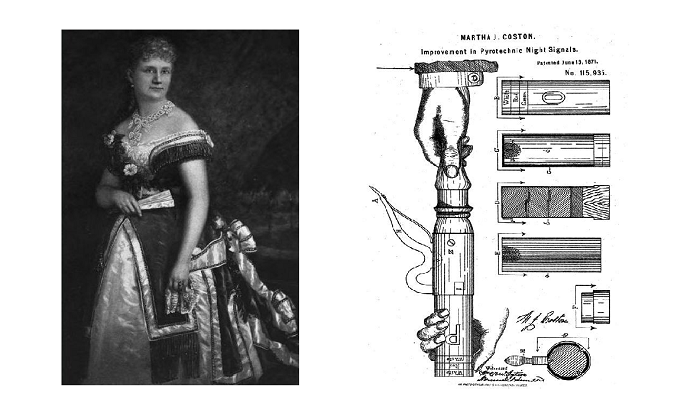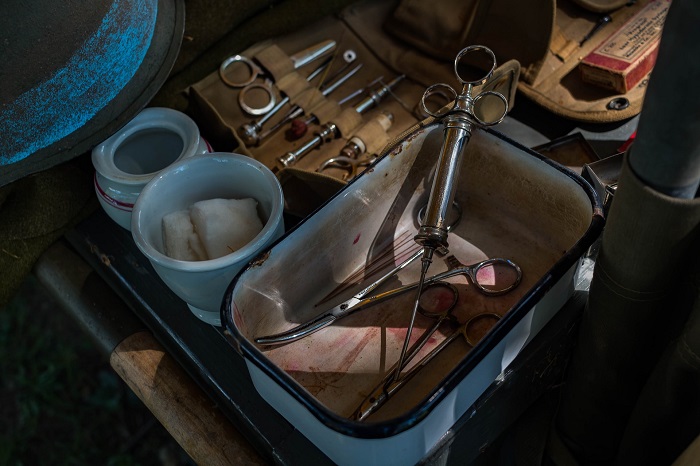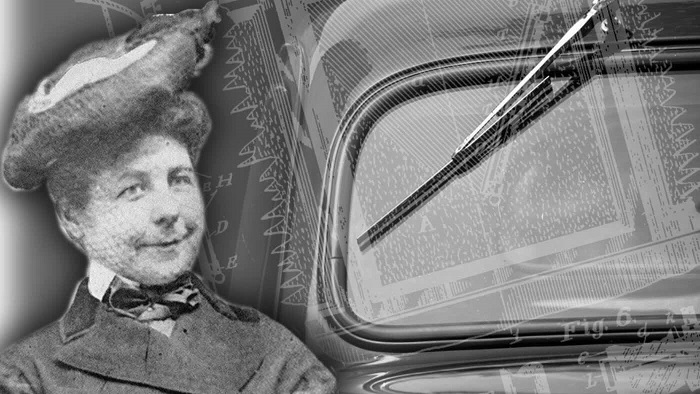ISABEL RUBIO ARROYO | Tungsteno
The forerunner of Wi-Fi was pioneered by a woman. Women also made it possible for man to reach the Moon and for the construction of the Brooklyn Bridge. After looking at the lives and work of four history-making female engineers and ground-breaking women architects, we now look at major inventions created by women: from windscreen wipers and the modern refrigerator to maritime signal flares and one-handed syringes.
Maritime signal flares
When she was just 16 years old, Martha Jane Hunt Coston (1826 – 1904) eloped with her partner, Benjamin Franklin Coston, who was a promising young inventor. In the years that followed, Benjamin perfected some explosive rockets and created a new type of primer for artillery pieces. He also developed a gas based on rosin (a coniferous resin) and used with great success in commercial and domestic lighting in hotels, lighthouses, steamboats, cottages and churches. However, continued exposure to toxic fumes led to Benjamin’s early death in 1848, leaving 21-year-old Martha a widow with four young children.
Shortly after his death, Martha Coston began going through her husband's papers. "I came upon a large envelope containing papers and a skilfully drawn plan of signals to be used at sea, at night, for the same purposes of communication that flags are used by day," she says in her autobiography. It was then that Coston set about studying and perfecting her husband's project, which was at a very preliminary stage. The ultimate goal was to create a signal flare that, when exploded, would scatter flames of various colours in particular combinations to express a communication code. As the young inventor lacked technical and scientific training, she was forced to sometimes pose as a man when dealing with experts in chemistry and pyrotechnics.
For a long time, the flares were difficult to make and use, the lights didn’t last long enough to be detected from ship to ship or from land, and the casings could not withstand the sea conditions. But eventually Martha Coston managed to file a patent for this night-time pyrotechnic signalling system in several countries. She created a device capable of emitting several signals, whose communication code was an "alphabet" consisting of ten numbers (0 to 9) and two letters (P and A). The lights could be seen at a distance of about 40 kilometres. These flares were used during the US Civil War, which lasted from 1861 to 1865, and later by the United States Life-Saving Service. The inventor also sold her system of long-lasting signal flares to navies, shippers and yacht clubs around the world, revolutionizing naval communication.

Martha J. Coston created a flare system for communicating at sea at night. Credit: Spanish Patent and Trademark Office / Wikimedia Commons.
Syringes that can be used with one hand
Among the most influential women in the field of medicine, Letitia Mumford Geer stands out. This American nurse patented in 1899 the first medical syringe that could be used with only one hand. This invention consisted of a cylinder, a piston rod, a handle and a nozzle. It was also the first syringe to contain glass parts. The piston rod had a U-shaped handle for easier gripping and to prevent hands from slipping when using it.
"The operator must insert the nozzle into the rectum and hold the cylinder by placing the fingers of the same hand in the rigid arm of the handle," the patent states. One of the great advantages of this invention is that both doctors and patients could use it on their own: "The handle can be drawn into a position near to the cylinder while injecting the medicine by the use of one hand, thereby enabling the operator to use the syringe-upon himself without the aid of assistant." Modern syringes are inspired by Mumford's syringe, which was easy to use and inexpensive and could be used for rectal injections and similar purposes.

Syringes prior to Mumford's invention had to be used with two hands. Credit: Unsplash.
The windscreen wiper
In 1902, Mary Anderson visited New York. "She was riding a streetcar and it was snowing. She observed that the streetcar driver had to get out and continually clean off the windshield," Sara-Scott Wingo, Anderson's great-grandniece, tells US National Public Radio (NPR). Seeing that this was causing delays, she came up with a possible solution: could some sort of blade wipe off the glass without the driver having to leave the streetcar? And thus the windscreen wiper was born.
The American returned to Birmingham, made a sketch of her device, wrote up a description of it and applied for a patent. In it, she explained that this device should be operated by a handle inside the vestibule of the car and be easily removable when not required, "thus leaving nothing to mar the usual appearance of the car during fair weather," according to the patent.
The inventor unsuccessfully tried to interest some companies in making such a device for use in automobiles, whose popularity was growing at this time. "We regret to state that we do not consider it to be of such commercial value as would warrant our undertaking to sell it," Dinning and Eckenstein said in a letter. Some even scoffed at Anderson's invention, believing that it would distract the driver and cause accidents. Over the years, however, windscreen wipers became indispensable on all types of vehicles, and Anderson finally gained some recognition when she was inducted into the National Inventors Hall of Fame in 2011.
Over the years, windscreen wipers became indispensable on all types of vehicles. Credit: UntoldEdu / YouTube.
The first modern refrigerator
The Chinese cut and stored ice around 1000 BC, while the Egyptians and Indians learned 500 years later to leave earthenware pots outside on cold nights to make ice. If today it seems unthinkable to imagine a house without a fridge, it is impossible to talk about one of the most widely used household appliances on the planet without mentioning Florence Parpart. This American was the creator of the modern version of the refrigerator in 1914.
In order to improve the preservation of certain foods, she took advantage of the fact that electricity was becoming more and more widely used in the United States at the beginning of the 20th century. Although iceboxes were already a common kitchen appliance and there were those who had tried to create electric refrigerators without much success, this new technology was able to preserve and cool food much more effectively. Over time, this type of refrigerator became almost as ubiquitous in American homes as electricity itself. A few years earlier, in 1900, Parpart had also filed a patent for a much improved street-cleaning machine, which ended up in cities throughout the United States.
Throughout history, different methods have been used to keep food and drink cold. Credit: Adam Ragusea / Youtube.
Apart from maritime signal flares, one-handed syringes, the windscreen wiper and the first modern refrigerator, there are many other inventions pioneered by women. These include anti-glare glass, disposable nappies, canned food and the mechanical e-book. The difficulties of access to education and the social rejection to which millions of women have been subjected for centuries have not prevented them from becoming the originators of brilliant devices.
· — —
Tungsteno is a journalism laboratory to scan the essence of innovation. Devised by Materia Publicaciones Científicas for Sacyr’s blog.
